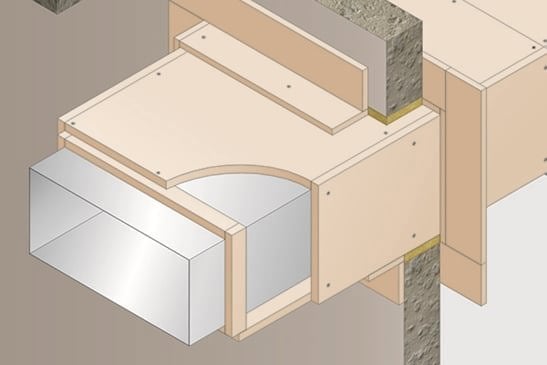Promat Technical Support
Contact our technical support team with your questions on passive fire protection solutions, our products and systems or installation advice.
Taken into account your location and browser settings, this is probably the language you are looking for:

Your documents cannot be downloaded because there are no results.
You have reached your download limit. Please review your documents and select a smaller range
A technical error occured while uploading your documents, Please try again later.
Smoke extraction is a crucial element in controlling fire and protecting people. Studies show that smoke is a main source for the spreading of fire through a building. In addition, toxic gasses can block the exits of the building. This is why smoke extraction is so crucial. Promat offers a unique and maintenance free solution for smoke extraction and ventilation.

Promat offers a wide range of solutions for self-supporting systems as well as particularly onerous conditions e.g. where high impact strength is required or for use in aggressive environments.
More information available in the Fire Protection Handbook and Technical Data Sheets.
The relative complexity of any ductwork system which is passing through different fire compartments and the relevance of the system’s function in ambient and fire conditions can make the selection of a suitable ductwork system difficult.
To determine the fire resistance of ducts (without the aid of fire dampers) passing through or between compartments, the system should normally be tested or assessed in accordance with BS 476: Part 24: 1987 or equivalent local legislation.
Factors for consideration when determining the correct specification to ensure ducts will provide the required fire performance include:
Chapter 6 of the Fire Protection Handbook includes a ductwork system selector, examples of system specifications for a range of fire rated ductwork applications and required fire protection periods. Additional system details are available in the Technical Data Sheets.
In the event of a fire it may be vital to the safety of the building occupants that certain electrical systems and services remain functioning until all personnel have escaped. Such systems will therefore require protection from fire for a specified period of time.
The following points are some of the factors which should be considered when determining the correct specification to ensure the cable duct system will provide the required fire performance.
Chapter 6 of the Fire Protection Handbook includes required board thickness tables, examples of system specifications for a range of fire rated ductwork applications and required fire protection periods. Additional system details are available in the Technical Data Sheets.
Contact our technical support team with your questions on passive fire protection solutions, our products and systems or installation advice.
Find the product datasheets, system brochures, declarations of performance, installation manuals and other documents you need to get the job done.